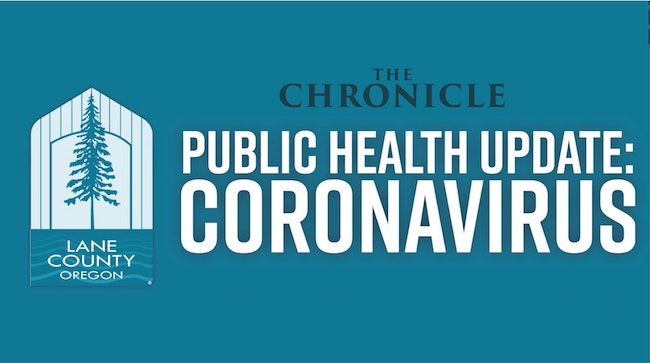
COVID-19 case information this week is being released by zip codes, and public health officials say that the data could help identify virus hot spots forming and allow more regionalized lockdown measures to take place.
“With the restrictions projected to relax in the somewhat near-future, the State recognized the need for identifying rural areas in order to identify and contain COVID-19 hotspots,” Jason Davis said, who is the public information officer for Lane County Health & Human Services.
Releasing information by zip code will give rural areas like Creswell, Cottage Grove and Pleasant Hill better insight to cases closest to home, Davis said. Releasing cases in specific zip codes was initially a patient privacy concern in rural areas because signifiers listed, like age and gender, could more easily be narrowed down to a particular person in a smaller community, he said. “Since stay-at-home restrictions were in place and people who were in contact with COVID-19 were directed to stay home, the thought also was that the public need for that information was not there at the time,” he added.
In accordance with privacy measures, new methods will list the age range and no longer the gender. Cases will be listed as “less than 10,” with cases thereafter being listed in real-time, Davis said.
“We can get much more localized with lockdowns,” through these measures, too, Davis said. “If there were to be a couple of cases in a nursing home facility in Creswell, we could lock down that whole facility to potentially contain the spread to just that building.”
Testing is being more widely distributed in general, Davis said. On average, 150 people are tested a day in Lane County, with as many as 250 a day in the higher end.
PeaceHealth recently began processing tests for all staff and for all patients admitted to the University District and to RiverBend locations, Davis said.
PeaceHealth and McKenzie-Willamette hospitals are also giving the county 50 tests each to be administered to at-risk public health populations and settings, Davis said. The unhoused populations at the memorial center in Springfield and at Lane County Fairgrounds in Eugene are being tested, Davis said, and the county next week will focus testing in nursing homes and long-term facilities, followed by the Latinx population. The county will collect the samples and take them to a lab for testing.
“Targeting populations and potentially affected COVID-19 work settings first will help us understand how this virus is moving through our populations and how it is moving through the county in general,” Davis said.
The method of testing the same sample twice also changed this week, Davis said. In order to be listed as a case in the county, tests previously needed to be double-tested, once locally and again by the Centers for Disease Control.
Davis said tests do not need to be validated through the CDC and that cases will now be listed as confirmed and as presumptive, he said.
“Now, if you have a known link to a COVID-19 case and have symptoms, you will be listed as presumptive and will need to self-isolate for 14 days,” Davis said.
Davis said drive-up, door-to-door and mobile testing, or “shotgun testing,” is not a proper use of testing resources for Lane County.
“It is not a tactic that is going to help us understand how the virus is working through the community with the resources we have available,” he said. “It will not help identify the virus reservoirs to stop the spread. That kind of testing is a shotgun smattering of one or two cases here and there. We will have no drive-thru testing resources here in the near future.”
The Institute for Disease Modeling (IDM) in Washington and OHA collaborated on a working report on COVID-19 trends in Oregon identifying implications for interventions. In the report, IDM predicts that there have been approximately 9,200 cumulative infections in Oregon, of which 2,300 had been diagnosed by April 23.
OHA information indicates that that number represents a drop of more than 40% from the 156 reported hospitalizations on April 8, the first day state officials disclosed active hospitalizations for confirmed cases of COVID-19. By press time Tuesday, Davis said there were zero COVID-19-related hospitalizations in the county, a trend in the county for over a week.
The drop-offs suggest that stay-home interventions have dramatically reduced transmission rates and IDM modeling suggests that physical distancing has prevented more than 70,000 COVID-19 infections and 1,500 hospitalizations in Oregon.
However, relatively small increases in transmission levels in the community could cause an increase in infections. As Oregon plans for loosening orders, IDM recommended other public health control strategies first, like expanding contact tracing, and the aggressive mitigation strategies be loosened incrementally to prevent any large increases in cases.
“We can all come together on the fact that we have the knowledge to prevent the spread — washing our hands, keeping physical distance, covering our mouths when we cough — so let’s do that, and it will allow us to keep going down the road of a somewhat relaxed environment,” Davis said.





